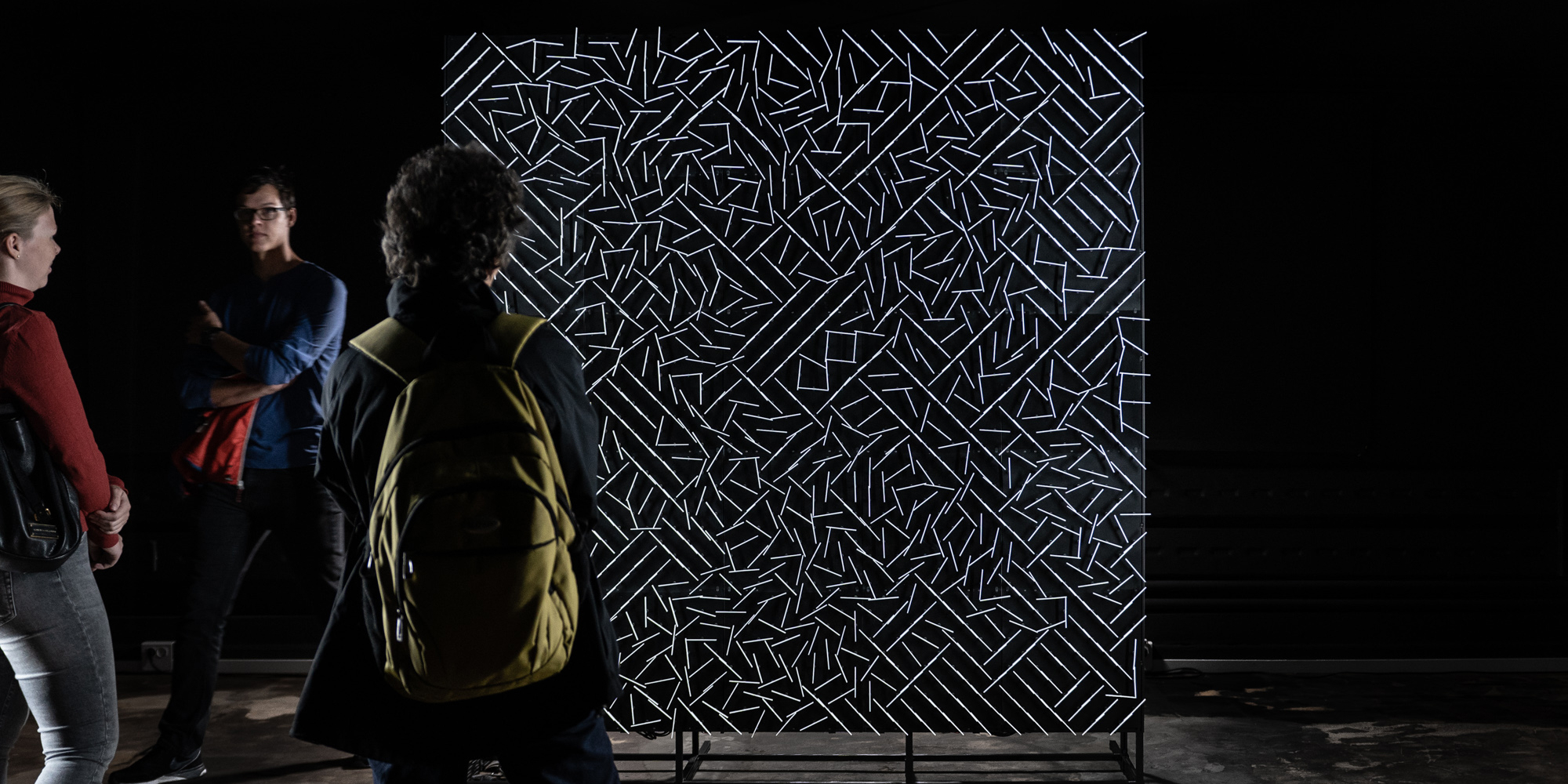How far can we go as human beings, where are our personal limits, where are the limits of my body? Under the title “Human Limitations – Limited Humanity”, the 2019 Ars Electronica Festival‘s theme exhibition not only explores these simultaneously very individual questions, but also raises probably the greatest questions of society itself. Co-Producer Christl Baur and Gerfried Stocker, artistic director, are convinced that new technologies such as bioengineering and artificial intelligence make it more important than ever to reflect on the moral principles we have imposed on ourselves. They take us on a journey deep down into the POSTCITY bunker, the venue of the theme exhibition, where we not only encounter language, physical optimizations, robots that can run faster than we do, or even love, but also finally face our human limits.
The festival theme “Out of the Box” – what is the meaning in the context of the theme exhibitions?
Gerfried Stocker: When it comes to Out of the Box, the subtitle is very important: The midlife crisis of the digital revolution. The fact that 40 years ago the social colonization of digital space began is where everything started. This is the time when desktop computers appeared, the PC – the personal computer – came onto the market in 1981 and this is the moment when important, effective technology came into people’s personal lives. It also became a private dimension. This is exactly the topic that we have been dealing with for 40 years now. Not the technological side of the digital revolution, but the cultural, the social. We are now asking ourselves the question, “This cannot have been everything”, it cannot be true that this wonderful dream of new possibilities of these digital media, of the global village that supplies people with information and expression on an equal level, has become the nightmare of a monitored, controlled society. The answer we’re trying to give is an invitation: out of the box, out of the cellars, out of the holes, out of the cover, out of the comfort zone. Because what we are seeing now is not technology, it is not economics, it is humanity. These are questions of human dignity that are very much being asked. That was the idea behind 40 years of Ars Electronica: Let’s take a look at how we have achieved the great success of the digital revolution in these 40 years, where do we stand now, are we satisfied with it, and how do we have to change our behavior, change our goals? That’s the theme of Out of the Box and – typical for Ars Electronica – the focus is on the human being.
The human being, the humanity leads us directly to the topic of the Theme Exhibition: Under the title “Human Limitations – Limited Humanity” we once again enter the POSTCITY bunker. Which human imperfections and limitations of humanity do we encounter?
Gerfried Stocker: The basic question before we dive into the exhibitions is why do we develop technologies? And there are two interesting basic patterns. One is very practical and pragmatic: we are limited as human beings. We have these limitations of our humanity, our physicality. The most beautiful example is, if you are born without fur and it is winter, you will only survive if you have technology. That is why we have been developing tools for thousands of years to overcome our limits, our limitations – the real ones as well as the perceived ones. At the same time, the development of technology, research, science and art – which brings them together so closely – is always connected with the idea, the conception of exceeding ourselves. Not only operatively in the sense of the tools, but also in a philosophical, spiritual sense. When we enter the epoch of artificial intelligence, from automation to the autonomization of things, what does that mean for our image of humanity? The questioning of our image of the human being must stand right at the beginning of everything – that’ s what the exhibition is based on.
Christl Baur: We have focused on questioning the two essential technologies that we believe will fundamentally change our image of humanity, our image of society, in the near future. Artificial Intelligence, as well as Biotechnologies, change the question of what the human being means, what does our body mean, but also a psychological approach: How do we perceive ourselves, where do we set our limits? AI will have a major influence on us as a society, although we see it as another tool, the question arises: how do we deal with it at the end of the day? How can we still influence these technologies, these developments so that we find a way to live together with them? How can we as humans create free spaces, subversive spaces, where we can continue to define ourselves with the thoughts and goals of human coexistence – regardless of the technology or in exchange with the technology?
Gerfried Stocker: It is about the field of understanding what is our image of humankind in the 21st century and the question of possible courses of action: As humans, do we remain at the centre of controlling what we develop, what we incite with AI? The key is responsibility without assuming responsibility – for this, of course, you also need knowledge and competence – that is the beautiful cycle in which these artistic projects operate. An interesting reflection on the question: Where do we stand as human beings now, on this threshold in the 21st century into an – even if that sounds exaggerated, but we stand on a threshold in a time of artificial intelligence, of autonomous systems. We need to reflect on this and work on it. The artistic projects offer orientation, the concept of the compass once again comes up. How can one reposition itself in this reorientation?
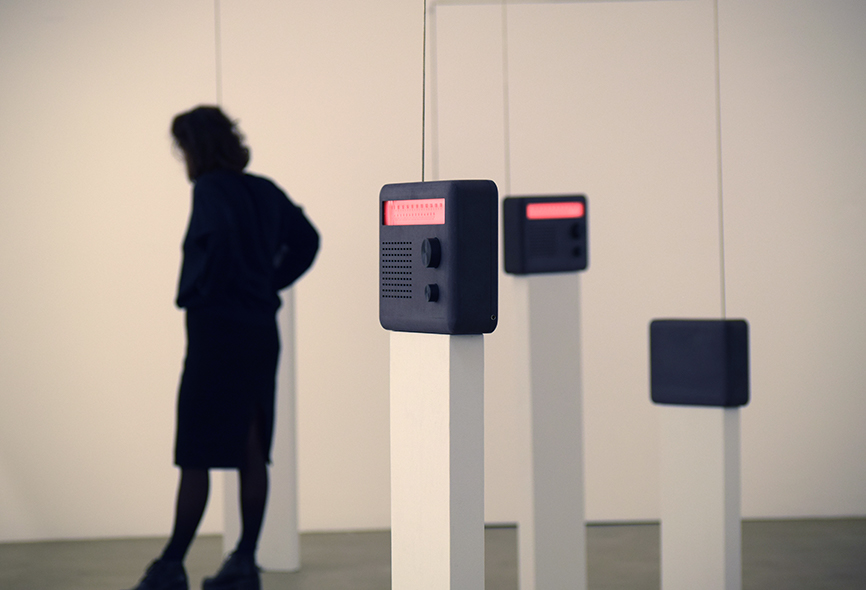
Are there again focal points or subdivisions within the theme exhibition?
Christl Baur: Particularly in the confrontation with the artistic works – most of which, by the way, originate from the submissions to the Prix Ars Electronica – several focal points have emerged that the artists are obviously very concerned with and which, as a result of this development, have also become essential elements of the theme exhibition. One of these is the subject of language. Language is something through which we strongly define ourselves as humans, the way we communicate with one another, empathy with another person, with an animal, with a plant. But also language in the form of a document that we archive, where we are able to make human knowledge accessible to further generations over thousands of years. Which of course is what defines us in a very different way from the communication channels of other species. This subject of language has also been used over the centuries, especially in authoritarian systems, to manipulate people, to use language for certain goals and purposes.
A very nice work in this context is Radiosands by Thom Kubli, who uses the technology of radio, which was mainly used in the 30’s, 40’s and 50’s to influence crowds of people and in a certain way to make themselves submissive. Language in this context is a different issue, especially in exchange with the artificial systems today, we create AI systems that are able to write texts, communicate with us, so that we as humans no longer perceive any difference whether a real person communicates with us or a system. The underlying danger is that we do not know where the information comes from, any kind of information can be processed. Fake News – that’ s known to everyone by now. But also quite clearly the question: Which information do we rely on? What is the essence of our judgment at the end of the day? That’s one of the thematic aspects.
“Particularly in the confrontation with the artistic works – most of which, by the way, originate from the submissions to the Prix Ars Electronica – several focal points have emerged that the artists are obviously very concerned with and which, as a result of this development, have also become essential elements of the theme exhibition.”
Gerfried Stocker: Also the appreciation. The interesting thing is, we’re in a situation where we can’t distinguish anymore, if it comes from a person or a machine, although this is what everyone agrees on, that this will be very important for us. The fact that we value more what comes from another person than what comes from the machine is a fundamental axiom of our system of values. This is something that is questioned in our experimental projects.
Christl Baur: We have to question our system of values, how we react to situations that no longer correspond to the everyday situations of the last 50 years, and how society adapts to this changed system of values.
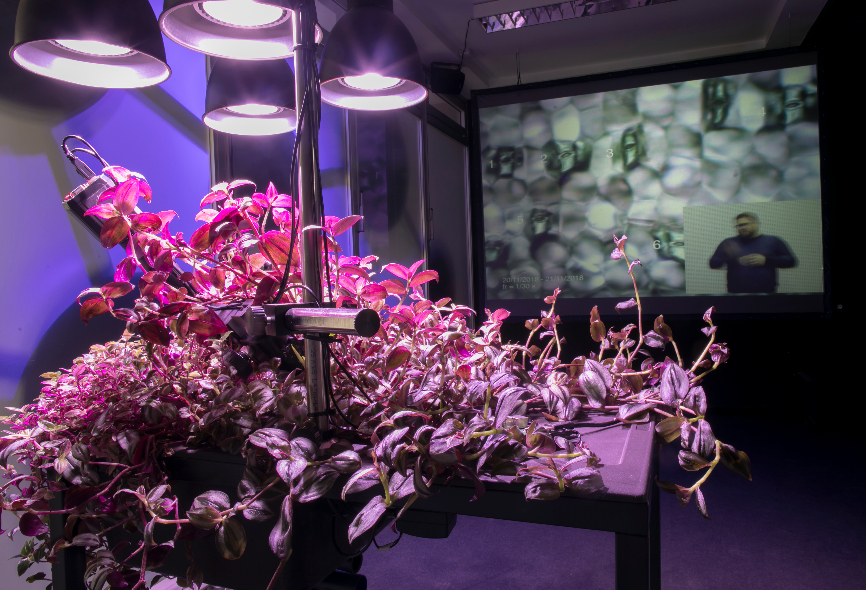
You mentioned language as a subtopic, are there others?
Christl Baur: A second sub-theme, which interprets human limitations in a broader sense in the form of an individual approach, is the limitations of the body itself. Through biotechnologies, genetic modification, and technologies that are related to this, we are able to change something not only in our body, but in the form of prostheses or tattoos, we are able to modify and change our genetic substance for us humans. This raises the question: What possibilities do we have, but also what critical approaches do we create. Also in consideration of the fact that as a society we have defined boundaries, what is ethically permissible and what is allowed by our morals, within these boundaries we feel safe and we are moving. Of course we can also discuss or expand them, but these boundaries must be completely reworked and rethought, especially by philosophers and ethicists. What does it actually mean to be human? Does it mean that we have two arms, that we have an artificial heart, that a marathon runner can get a new heart implanted so that he can run faster? Or does it mean that only a sick person can have a new heart to survive?
On the other hand, it is precisely these boundaries that we have created ourselves, that help us navigate through what is right and what is wrong, what we allow ourselves to do, that could also be used positively, with all the interventions that we are currently doing to our world in the form of climate change, migratory flows and so on. Can we modify our body to such an extent that it does not become a superhuman, but a better human being who also adapts to environmental sustainability? In that case, would that be a technology that could have a positive effect so that we can survive on this earth for more than 50 years?
Gerfried Stocker: I think this is an exciting paradox in its simplicity: we have never before had so many opportunities to go beyond our limits. The typical limitations of humans can be removed and overcome with technology. We have robots that run faster than us, we have AI systems that can do certain things much better than us. At the moment we are asking ourselves whether humanity as such is at its limit? This paradox, that in overcoming our borders we come to the limits of our idea of what humanity is, is exactly what we have to realistically say: we need a discussion of society as a whole and a new consensus on how we can redefine and reinvent humanity and human dignity in the 21st century, without accepting bad compromises. The call for regulation on the Internet is justified, it is loud from both sides, but the big question is, whose rules of the game are these? Whose norms and moral concepts – in this future world in which we fundamentally change the image of man through AI and genetic engineering and biotechnology – whose moral concepts will we subjugate ourselves to, on what can we agree? This is a debate that is only just starting, when you realize that completely new players are becoming involved. We have never had a situation where children, who are under 18, have taken the lead in the debate about our actions on the planet. It is exciting to see how developments converge that will certainly determine the coming decades.

Let’s go a little further into the Theme Exhibition. Which projects await us and how do they subordinate themselves to the title of the exhibition? Can you highlight some of the outstanding projects?
Christl Baur: Thom Kubli has been mentioned before in the context of language. A second project is nimiia cetii by Jenna Sutela. She is a Finnish artist who, together with Memo Akten, has approached the subject of language as well as Trans-Species Communication and has created a very beautiful, very poetic work that places the translation, the speaking to each other in an extremely beautiful context, where you can perceive, although you don’t understand how different systems – an AI, bacteria, an already extinct language – manage to create their own new language together. We have a few in the bunker regarding this approach – whether with plants, bats, … – but each of them asks exactly the same questions with a common approach: How can we deal with other species? What is their strength, their weakness? Mushroom networks, root networks of mushrooms, how do they communicate with each other? This is not understandable for us humans. We do not know how they transport information, but it could be essential for our survival. Artificial intelligence could help to understand or develop a different approach by quickly interpreting and analysing data.
Gerfried Stocker: Also in the work of Špela Petrič, Institute for Inconspicuous Languages: Reading Lips, it is totally exciting to see that on the AI side as well as on the biotech side of artistic work there is exactly this common point: Not only this autistic view of humanity itself, but the opening up and speculative assumption that there will be artificial forms of life, however they may be. How can we communicate with them? What can be a form of Trans-Species Communication? That’s the great thing about it, because it gives us new ideas and inspiration to think about what’s special about human beings and maybe lose one or the other arrogance. A realistic view that we are only one of many life forms of the planet can of course not only help us in the further development of these technologies, but perhaps also help us to take a new position in dealing with the big environmental problems, which will probably be more dominant in the next decades than anything we imagine at the moment about AI in science fiction terms.
Christl Baur: Another approach to the context of language that I think is very important is the wording and the way we describe artificial intelligence. We always create images that are very similar to human beings: We talk in the form of a brain, we talk in the form of neural networks, of neurons about an AI. We produce an image in order to understand the processes. Speculative Artificial Intelligence by Birk Schmithüsen does exactly this – he creates a kind of extended brain, where he symbolizes individual neurons via LED spots and tries to illustrate a kind of communication, of language transfer via a visual level. But for me, the question is quite clear: we need new terms, how we talk about AI, so that we are able to understand the technology, but also so that we understand the bigger context – also in the philosophical and ethical way of thinking.
Gerfried Stocker: Also I’am, the work of Marta De Menezes. It leads us very nicely back to the fact that, in the end, it is not about further developing technology, but rather about ourselves and the interaction, from person to person. She and her husband, longtime spouse, now artist, scientist, live and work together and then do the exciting but also intense experiment in which they exchange antibodies of their body, their entity. And connected with this is the question: How can the togetherness and antagonism of people look like? They bring the question to a very essential and poetic dimension.
Christl Baur: …and then she associates it with the very human feeling of love, which poets and philosophers have already written countless papers about, but which is the essence of the work alongside all the technologies that she uses and on which she and her partner research. It is about love, empathy between us humans, between us and other species and how we can live in a mutual unity.
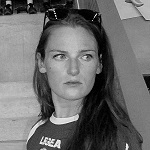
Christl Baur is co-producer at Ars Electronica, researcher with an interdisciplinary background in art history, cultural management, and natural science. She is particularly interested in the conjunction of aesthetic and social practices that center on collaboration and experimentation and challenge dominant social, political, and economic protocols. Her research field encompasses topics such as video art, new media technologies, computer, biotechnology and interactive art, and she works at the nexus of art & science. Over recent years, she has developed, co-produced and delivered large-scale exhibitions and performances, research, residency & publication projects—most recently in cooperation with universities and scientific associations such as Google Arts & Culture, Microsoft, Hyundai as well as the Chinese University of Art Beijing. She works closely together with artists whose practice is situated at the interface of art, science, and technology.
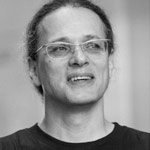
Gerfried Stocker is a media artist and telecommunications engineer. In 1991, he founded x-space, a team formed to carry out interdisciplinary projects, which went on to produce numerous installations and performances featuring elements of interaction, robotics and telecommunications.Since 1995, Gerfried Stocker has been artistic director of Ars Electronica. In 1995-96, he headed the crew of artists and technicians that developed the Ars Electronica Center’s pioneering new exhibition strategies and set up the facility’s in-house R&D department, the Ars Electronica Futurelab. He has been chiefly responsible for conceiving and implementing the series of international exhibitions that Ars Electronica has staged since 2004, and, beginning in 2005, for the planning and thematic repositioning of the new, expanded Ars Electronica Center, which opened its doors in January 2009.
This year’s Ars Electronica Festival Theme Exhibition will run September 5-9, 2019 at POSTCITY Linz. Consult our website for details.
To learn more about Ars Electronica, follow us on Facebook, Twitter, Instagram et al., subscribe to our newsletter, and check us out online at https://ars.electronica.art/news/en/.
